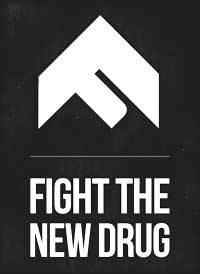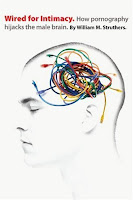Porn is a Drug, Taking the Pledge
In 1993, at the age of 18, I obtained my first ever email address. I had joined the internet age.
In 1994 I was introduced to my first online pornographic image. Someone had downloaded it at a uni lab from usenet, transferred it on a floppy disk, and displayed it on their computer when I was in the room. For a wet-behind-the-ears not-yet-a-full-adult like myself it was a smack between (and through) the eyes.
This was before the “world wide web” had caught on, and the “Netscape” browser was less than niche, and even further from mainstream. I am nearly 40 years old now, but I can tell you, I am one of the earliest members of the electronically pornified generations.
For us Gen-X’ers, it wasn’t ubiquitous. The seedy stops on the “information superhighway” could be reasonably easily avoided. Unless you got hooked – but we didn’t know about that back then, and many of us weren’t prepared.
For the digitally native Gen-Y’ers and younger, a sexualised internet is part of the background noise. It is not an inevitable trap, but it is ever-present. For those of us who have struggled and for those of us who have hoped and prayed and wrestled with ways in which to protect and care for a younger generation: the context has been daunting, and the message and method unsure and seemingly untested. To speak about it, or not to speak about it – and how? – that is the question!
There has been moralising, and therapising, and agonising as to what to say and how to say it. The ethical evils – objectivisation of women and corruption of men – have been expounded by everyone from radical feminists through to bible-beating conservatives.
But slowly over the years, a useful approach has taken shape. In the Christian sphere, authors like Allan Meyer and books like Wired for Intimacy and many others explored the psychological and neurological effects of pornography: the dopamine kick, the addiction cycle. Here was a explanation with practical implications. Here were doorways to effective tools for those who struggled: the well-known tools for addictive behaviours. From support groups (“Hi I’m … and I’m a pornoholic”) to accountability partners, awareness of limits and situational avoidance, Cognitive Behavioural Therapy, spiritual direction (“My brain is broken, Lord, please help”), and self-talk. Among these were the things that worked (and work) for me.
 Until recently, however, I had not yet seen much in the “secular” arena. What I have seen has mostly been about unhelpful guilt-avoidance (“there’s nothing to be ashamed of, go ahead, it’s healthy curiosity” type stuff) rather than actually about dealing with the objective reality. But I have recently come across a website, even though it’s been around since 2009. It’s called Fight The New Drug and while it’s not perfect, it is very very good.
Until recently, however, I had not yet seen much in the “secular” arena. What I have seen has mostly been about unhelpful guilt-avoidance (“there’s nothing to be ashamed of, go ahead, it’s healthy curiosity” type stuff) rather than actually about dealing with the objective reality. But I have recently come across a website, even though it’s been around since 2009. It’s called Fight The New Drug and while it’s not perfect, it is very very good.
It has focussed its purpose. It’s not calling for censorship. It’s not about pontificating. It’s about educating. It declares it simply: Porn is harmful: Pornography affects the brain; Pornography affects relationships; Pornography affects society. It is backed by research. Articles unpack the issues anecdotally. It is useful, and very very relevant.
It also provides a tool for response. It’s symbolic, but meaningful. It’s a pledge that goes like this:
As a Fighter I am…
STRONG: I have joined an army of supporters and will rely on their strength as well as my own to adopt a new shouldering of obligation in helping others understand how pornography is affecting their lives.
OPEN-MINDED: I recognize that mine is not the only opinion. I will respect others points of view just as I expect them to do the same towards me.
ACCEPTING: I know that judging others actions is not my place. I will respectfully promote my opinions but in the end allow others to choose for themselves.
A TRUE LOVER: I seek real relationships and shun their hollow counterfeits. I will not be that lone ranger looking for love from behind a computer screen.
BOLD: I am not afraid to speak openly about the effects of pornography.
A REBEL: I refuse to follow the status quo. I will do what needs to be done and say what needs to be said regardless of what is popular.
REAL: I do not pursue false imitations or masked presentations. I am confident enough in myself to be genuine.
UNDERSTANDING: I am aware of the difficulty some may face in ridding their lives of pornography. Rather than condemning actions I will help relieve shame.
ENCOURAGING: I will not turn my back on those that need my help. I will commit to helping them overcome the effects of pornography.
It’s not perfect, of course. And from my own point of view, a recognition of Christ (and his strength) would deepen and strengthen the words. But in terms of broad edification and taking the right track, this is brilliant. The final lines are right: Relieve shame. Provide encouragement. This pledge is an articulate accountable approach.
Generationally, the movement and the pledge are aimed at the millenials.
Fight the New Drug is a movement. A cause. A campaign. A group of young, passionate, and creative people with the simple mission to spread facts on the harmful effects of porn.
No religion. No political agenda. Just spreading the word through science, research, and personal accounts.
But, generationally, mine was the first to encounter electronic porn. I was there in that insidious beginning. I will not leave it to the younger ones to stand up alone.
I am now a middle-aged man, a father of teenagers (one just about to be an adult), and, yes, I am a pastor. In the rest of this post I am going to share something of my story and what I have learned. It’s a story that I’ve shared off-and-on and to greater-and-lesser extents in a number of places. But it hasn’t been written down. It is intended as encouragement. For teenagers, young men, and even men of my own age and older: For those who feel bound, and hopeless. You are not alone. And there is always hope.
My story:
My wrestle with pornography has two parts. I have mentioned the first in my initial exposure in my university days. I didn’t know it at the time but the effect was amplified by some of the pain and problems of my own life. When the pain reared it’s head, so did the cycle: the dopamine kick would provide false comfort against the pain, and the subsequent low would increase the pain. I would never have done drugs, or turned to alcohol. But in a very similar way, I was allowing my brain to be rewired through the abuse of the pleasure centre. I was hurting myself, and I brought hurt to my new marriage. Damage was occurring and it was heading towards out-of-control.
It was through counselling that I not only started to become aware of the cycle, but of the underlying psychological pain. With lots of help (personally and professionally and spiritually) I was able to face that pain and find healing and resolution. By this time I was in my mid-20’s. The result was confidence and strength that I had never known before. I consider these a gift from God.
The second part of my story began: Even with a new-found strength, my brain was still wrongly re-wired. Old habits continued as ongoing weaknesses. Times of depression, loneliness, and other situations became trigger points. I had to learn to protect myself. For me, there are three things that help me do this.
The minor one is this: Building boundaries and “fences” back from the edge. There is no technology that I cannot circumvent, but I can make it so that I don’t quickly slip. I learned these things by trial and error. I use OpenDNS for my entire home network. I flick every safe-search switch I can find.
The intermediate one is this: I look for accountability. This isn’t always easy because it needs someone else who is willing and able to ask the “How are you doing?” question without fear or favour, nor condemnation, but with seriousness. My accountability has sometimes been, by agreement, with my wife, who is the most gracious and loving person I know. At other times it has been with a prayer partner, a member of a retreat group, a close and unconditionally-accepting friend. Sometimes it hasn’t been easy to find the right person for accountability, but I value such a person greatly. The Bible talks about “provoking one another to love and good works.” This form of provocation is one of the greatest gifts a man can give his friend.
The major one is this: I have learned to listen to myself. I have learned to recognise signs of depression, both emotionally and physically. I don’t pretend I’m strong when I’m not. Honest self-awareness can become the stuff of accountability in supportive relationships that build resilience while you’re still a long way from “the edge.”
I am now almost 40 years old. And the wrestle with the drug that is porn is part of my story. Am I free of it? The truth is that while the draw of it does dissipate, I cannot pretend I am strong when I am not. My brain is still broken and assuming it isn’t is to choose an unwise path. The protections must still be in place.
There is regret and sorrow. How can there not be? The Fight the New Drug site is correct: porn causes damage. I must own my damage.
And there is a certain amount of trepidation and wariness, and that is good. Down the end of the porn road is self-destruction and utterly severe consequences for life, family, work, ministry, relationships, right-thinking, and all that is good and godly. I have felt the dread of this road. That’s the right thing to feel, and to the extent that I feel it, I know something is working correctly.
But I have come to a place where I do not fear it any longer. I think this is because whatever strength I have I still consider to be a gift from God. He has gifted me with a wonderful loving forgiving wife. He has gifted me with wise counsellors and accountability friends. He has gifted me with his own internal workings of his Spirit. It is in Jesus Christ that whatever pledge I, personally, make has force. It is he who loves me without condemnation, and it is his love, and his truth, and his heart, that is the best antidote to my own broken desires. It is his strength that I have found at work in my own life. And because it his strength, and not mine, I can share my story, make my pledge, and even call myself “fighter” and confidently assert: there is hope, and you are not alone.





